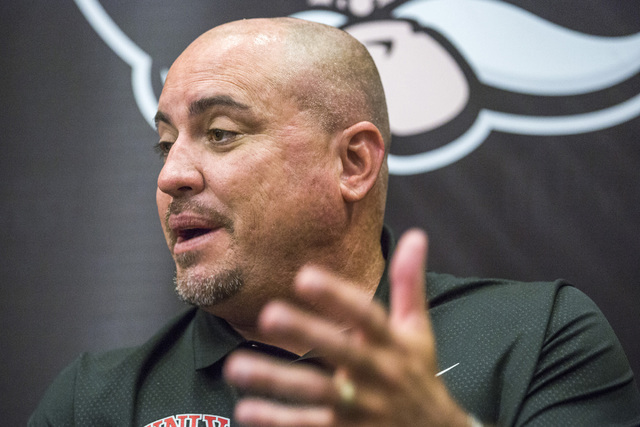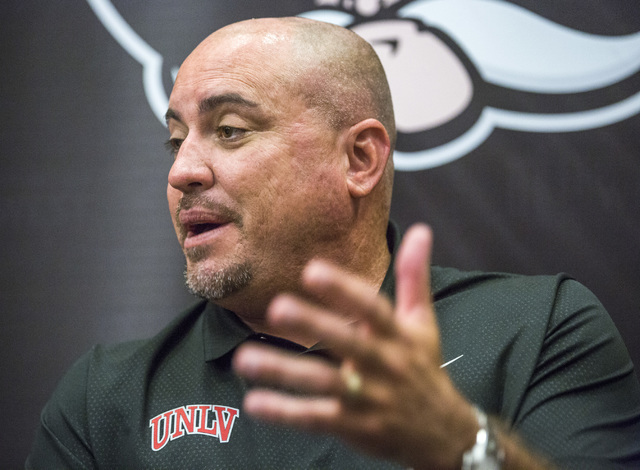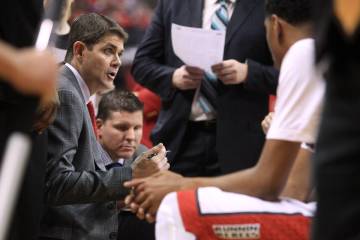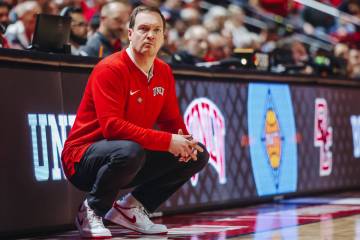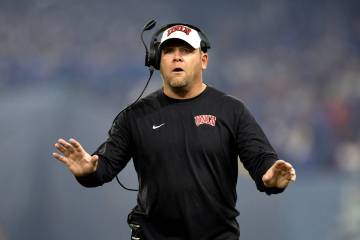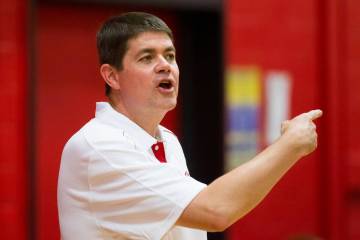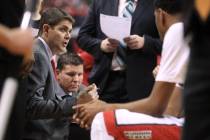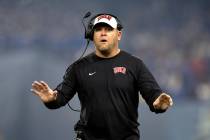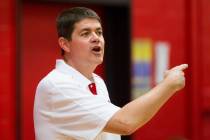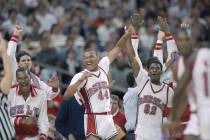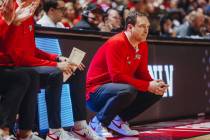Recruiting Game: Signing dates aren’t locked in, but changes create headaches
Changing a sport’s national letter of intent signing date is similar to the political structure in the nation’s capital.
It can be done. It has been done. But it’s a tedious process that provides headaches to those involved.
“Just like politics,” said UNLV associate athletic director for compliance Eric Toliver. “People want to recommend a rule, politicians push it and then America votes on it. And then there are so many Americans that say, ‘I hate that rule.’ Well, you had a chance to put your say in it.”

Much like a bill is proposed with hopes of becoming a law, or how representatives wish to amend documents, Division I and Division II college coaches must endure a multi-stepped process to choose and/or alter their sport’s signing date.
“The only way it can change is if someone submits a piece of legislation to move it,” Toliver said. “There’s a misconception that the NCAA makes the rules. It’s a perception that a bunch of NCAA staff members come up and say, ‘Here’s our new rule.’ The truth is, conferences and schools come up with the rules, and they all vote on it and then the NCAA implements what’s been adopted.”
First, there’s the proposal made by each sport’s coach. Then each school’s president and athletic representatives, who act as the oversee committee, review the idea, and if the school supports the change, it is submitted to the conference. A majority vote is needed there before the proposal reaches the NCAA for review.
“There are a lot of pieces of legislation and proposals that get tabled, that get defeated,” Toliver said. “Sometimes, they’ll get adopted. … But it’s a lot of work.”
That’s why signing dates aren’t discussed as frequently as some might think.
“Not as much as people would think,” UNLV football coach Tony Sanchez said. “In the last two years in being in this job and in conference meetings, it’s not something we talk about a bunch. There’s some other things that are a little more poignant — the way we practice and things like that, contact rules, social media.”
That’s not to say, however, signing dates are locked in.
The NCAA originally started its national letter of intent program in 1964 with just one signing date in May. But over time, all sports have changed their dates to best fit their seasons and “recruiting periods.”
“As the recruiting period evolved, the various signing periods were created,” said Susan Peal, director of the National Letter of Intent program for the NCAA. “When the signing dates were established, they were to support the recruiting periods for each sport.”
Despite being a separate entity and having its own letter of intent program, the National Junior College Athletic Association has closely resembled the national letter of intent since it started in 1989.
In April, though, it received a big makeover when the NJCAA Eligibility Committee wanted to combat the yearly proposals from coaches. This led to the NJCAA forming one big signing date on Nov. 1, which will go into effect this season. The only exception is football, in which the signing date still falls on the first Wednesday of February.
“The goal of having a universal date was to avoid confusion and discrepancies between sports,” NJCAA assistant executive director Mark Krug said. “The universal date will allow athletic directors and administrators to monitor and administer the LOI process more effectively across all sports.”
College of Southern Nevada athletic director Dexter Irvin agreed.
“There are some unknowns, but we think it will be a positive thing for us,” Irvin said.
. “It’s really going to be nice for us because it allows us to focus our efforts to that date and be more consistent in the message to the student-athletes. It’s a much more coherent procedure. In today’s world, where everything is confusing, let’s not make it worse.”
Toliver admitted if it were up to him, one signing date would be the way to go for national letter of intent schools.
“From a compliance person in our office, it’s a challenge to monitor those dates,” he said. “If you look at the NCAA manual, you have a lot of rules that say, ‘Basketball only’ or ‘Division I only.’ So sometimes when it’s sports specific, it does create confusion, but that’s what we do. We’ve just got to be sticklers to details.”
Contact reporter Ashton Ferguson at aferguson@reviewjournal.com or 702-383-0430. Follow him on Twitter: @af_ferguson.



